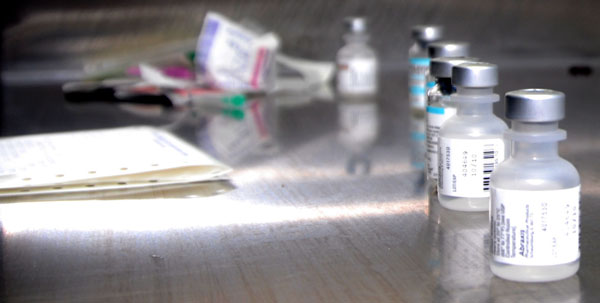You might have heard a lot of news regarding the opioid epidemic, but a new analysis by University of Michigan researchers illustrate just how deadly opioids can be.
The study, published in The New England Journal of Medicine, was conducted by Dr. Amy Bohnert, an associate professor of psychiatry at the U-M Medical School and Dr. Mark Ilgen, an associate director of the U-M Addiction Center.
The pair looked at trends in opioid use, overdose and suicide in the US over the past two decades. The death rate due to overdose and suicide more than doubled from 2000 to 2017.
“Unlike other common causes of death, overdose and suicide deaths have increased over the last 15 years in the United States,” said Bohnert. “This pattern, along with overlap in the factors that increase risk for each, support the idea that they are related problems and the increases are due to shared fundamental causes.”
The more sobering statistic? Over 40 percent of such deaths were caused by opioids in 2017 alone – and that is most likely an underestimate.
The researchers also found that opioids were involved in more than two-thirds of all unintentional overdose deaths and one-third of all overdose-related suicides. Whatever the intent, it is clear that more effective prevention strategies are needed.
Perhaps one way to prevent opioid overdose-related deaths would be to keep an eye on those who might be at risk.
Researchers from University of Washington have developed a mobile app called Second Chance that monitors a person’s breathing rate and movement as a way to sense impending overdose. Their research was published in Science Translational Medicine.
The app assesses breathing patterns through sound waves. Slowed breathing – down to seven breaths per minute – can be a sign of drug overdose.
“We’re looking for two main precursors to opioid overdose: when a person stops breathing, or when a person’s breathing rate is seven breaths per minute or lower,” said co-corresponding author Dr. Jacob Sunshine, an assistant professor of anesthesiology and pain medicine at the UW School of Medicine. “Less than eight breaths per minute is a common cutoff point in a hospital that would trigger people to go to the bedside and make sure a patient is OK.”
Additionally, the app can monitor movements. According to lead author Rajalakshmi Nandakumar, a doctoral student at UW’s Paul G. Allen School of Computer Science & Engineering, a person’s head slumping is a characteristic motion of opioid overdose.
The researchers found that the algorithm behind the app could effectively detect overdose-related breathing problems in about 90 percent of people who tested the app. Participants injected drugs at a supervised injection facility in Vancouver, Canada. In a separate “overdose simulation,” the algorithm accurately predicted overdoses 95 percent of the time.
Mobile apps like Second Chance can potentially prevent deaths due to drug overdose. They could be effective for people who are at risk for opioid misuse, such as people with chronic pain or a history of mental health conditions.
RELATED QUIZ: What do you know about Prescription Drug Abuse?
In their article, Bohnert and Ilgen suggested other strategies that could reduce the risk of opioid-driven suicide and overdose. One of their strategies is to have close friends and family carry naloxone with them, a drug which can reverse the effects of an opioid overdose.
Indeed, the team behind Second Chance are hoping to add a naloxone alert to the app.
“When the app detects decreased or absent breathing, we’d like it to send an alarm asking the person to interact with it,” said co-corresponding author Shyam Gollakota, an associate professor in the UW’s Paul G. Allen School of Computer Science & Engineering. “Then if the person fails to interact with it, that’s when we say: ‘OK this is a stage where we need to alert someone,’ and the phone can contact someone with naloxone.”
There are other mobile apps and medical devices used to combat the opioid crisis. In December 2018, the reSET-O mobile app by Pear Therapeutics and Sandoz was approved by the US Food and Drug Administration (FDA) to aid with opioid use disorder rehabilitation.
Stopping the opioid epidemic won’t be as easy as sweeping the streets for illegal drug use, but the advancement of novel prevention or risk-reduction strategies will bring us one step closer to a solution.











Join or login to leave a comment
JOIN LOGIN